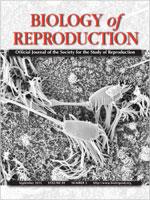The basic tenets of germ cell development are conserved among metazoans. Following lineage commitment in the embryo, germ cells proliferate, transition into meiosis, and then differentiate into gametes capable of fertilization. In lower organisms such as Drosophila and C. elegans, germline stem cells make the decision to proliferate or enter meiosis based in large part on the regulated expression of genes by translational control. This study undertakes a direct characterization of mRNAs that experience translational control and their involvement in similar decisions in the mammalian testis. We previously showed that translation of mRNA encoding the germ cell-specific gene Rhox13 was suppressed in the fetal and neonatal testis. By investigating changes in message utilization during neonatal testis development, we found that a large number of mRNAs encoding both housekeeping and germ cell-specific proteins experience enhanced translational efficiency, rather than increase in abundance, in the testis as quiescent gonocytes transition to mitotic spermatogonia. Our results indicate that translational control is a significant regulator of the germ cell proteome during neonatal testis development.
How to translate text using browser tools
7 August 2013
Translational Activation of Developmental Messenger RNAs During Neonatal Mouse Testis Development
Vesna A. Chappell,
Jonathan T. Busada,
Brett D. Keiper,
Christopher B. Geyer
ACCESS THE FULL ARTICLE

Biology of Reproduction
Vol. 89 • No. 3
September 2013
Vol. 89 • No. 3
September 2013
gonocyte
spermatogenesis
spermatogonia
testis
translation




